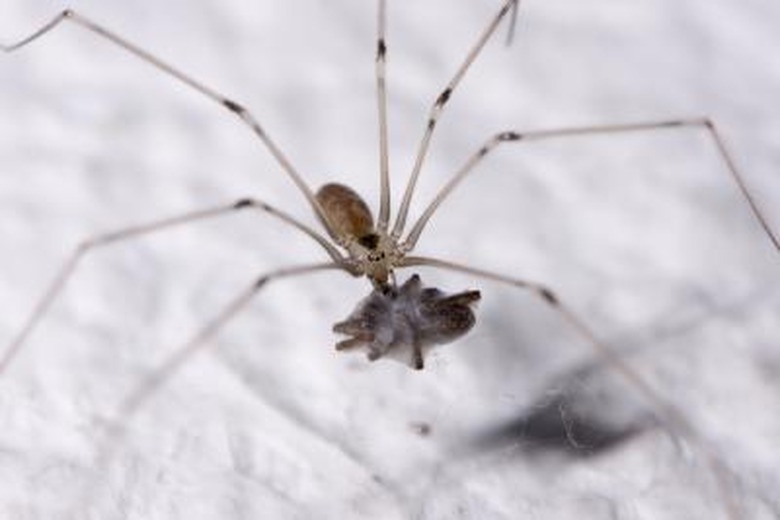Common House Spiders In Wisconsin
About 500 species of spider have been found within the state of Wisconsin, according to the Cofrin Center for Biodiversity at the University of Wisconsin. While many of these species are extremely rare and likely to get even rarer thanks to the ongoing loss of habitat and threat posed by acidic rain, there are a handful of species that are commonly found within the home.
Common House Spider
Common House Spider
As in the rest of the United States, the common house spider, which is also known as the domestic house spider, is easily spotted in Wisconsin homes. In fact, if you find a standard-looking cobweb in a nook or cranny of your house, chances are that a common house spider built it. To properly identify this type of spider, look out for a yellow/brownish body and darker-colored rings on the legs. Additionally, many of these spiders may also have a small light spot on the highest portion of their abdomens.
Giant House Spider
Giant House Spider
A native of the northwestern states of America, the giant house spider is one of the more common types likely to be found in Wisconsin homes. Though, as its name implies, this spider can be alarmingly big, it is harmless. However, thanks to its size and light-brown coloring, it can be confused with the not-so-friendly hobo spider. A giant house spider may be worth keeping around the house because they are known to eat hobo spiders.
Sac Spider
Sac Spider
Also known as two-clawed hunting spiders, the sac spider is commonly found both inside the home and in the garden. Not even half an inch in length, they are usually yellow or very light brown in color. One good way to positively identify one is to watch its behavior. If it constructs a den-like retreat in a corner or tucked away place, rather than a traditional web, then chances are it is a sac spider.
Cellar Spider
Cellar Spider
The cellar spider, or Pholcus phalangiodes, can be found all over the home and not just in the basement, as its name suggests. However, it is more commonly referred to as the 'daddy longlegs,' thanks to its elongated limbs, which are often up to six times the length of the main body. The spider tends to build webs on the ceilings of garages, cellars and other rooms of the home and is often seen as a welcome guest thanks to its habit of eating insects, including woodlice and other spiders.
Cite This Article
MLA
Hewitt, David. "Common House Spiders In Wisconsin" sciencing.com, https://www.sciencing.com/common-house-spiders-wisconsin-7902039/. 22 November 2019.
APA
Hewitt, David. (2019, November 22). Common House Spiders In Wisconsin. sciencing.com. Retrieved from https://www.sciencing.com/common-house-spiders-wisconsin-7902039/
Chicago
Hewitt, David. Common House Spiders In Wisconsin last modified March 24, 2022. https://www.sciencing.com/common-house-spiders-wisconsin-7902039/
